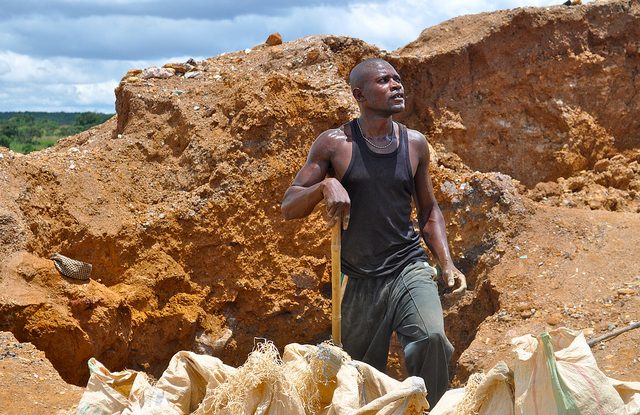A new study published in Nature Sustainability sheds light on the far-reaching impact of mining beyond the excavation site.
Conducted by a team from The Center for International Forestry Research and World Agroforestry (CIFOR-ICRAF)’s Global Comparative Study on REDD+, the research is the first to estimate the triggering effects of mining in the region. The study reveals that artisanal mining attracts entire communities. Settlements and farmland spring up around mining sites, with deforestation impacts that are, on average, 28 times larger than the mine itself.
The Congo Basin rainforest, the world’s second-largest, plays a vital role as a carbon sink, biodiversity hotspot, and livelihood source for millions of people. However, beneath its canopy lie valuable minerals—notably gold and coltan, a crucial component in smartphones and laptops.
Recently, a team of researchers from the Norwegian University of Life Sciences (NMBU), Wageningen University and Research, CIFOR-ICRAF and the French agricultural research and cooperation organization (CIRAD) has employed advanced satellite data and statistical models to investigate the impact of mining on the surrounding forest.
“The vast majority of minerals in the eastern Democratic Republic of Congo are extracted in artisanal mines,” says Malte Ladewig, lead author and doctoral scholar at the School of Economics and Business, NMBU. “As these are small in scale, they only have a limited direct impact on deforestation.”
“Far more critical are the indirect impacts caused by the land uses that accompany the onset of mining,” Ladewig explains.“As minerals are discovered and exploitation starts in the forest, people start moving into these often remote and sparsely inhabited areas.”
As settlers arrive, so does the need for land to build homes and grow food. The study reveals that deforestation for settlement expansion and farmland accelerates as mining begins and quickly outstripping the area cleared for the mine.
A sensitivity analysis shows that the trigger effects varied depending on location. Mines situated in areas with more favourable agricultural conditions and better accessibility saw a greater surge in deforestation following mineral discovery. Additionally, the study finds a positive correlation between the number of conflicts since the mine’s opening and the extent of deforestation triggered. Estimating the triggering effects of mining is not an easy task. “The key issue is how to identify suitable control sites,” says study co-author Arild Angelsen, a professor at NMBU and CIFOR-ICRAF senior associate. The research employs recently developed statistical methods, using not-yet-established mines as control sites until they eventually become active mining locations.
The study draws on a unique data, harnessing machine learning algorithms and data from various sources, including Global Forest Watch, Planet-NICFI and FAO, to track mining activity and subsequent land use changes. The mining data are based on a recent paper published in Scientific Reports, led by Robert Masolele at the Wageningen University and Research.
While conserving rainforests is vital, solutions are more complex, Ladewig stresses. “Decades of armed conflict have led to the deterioration of rural living conditions, creating widespread dependence on artisanal mining in the region. Any solution must begin with lasting peace and focus on alternative livelihoods.”
Past supply chain initiatives, though well-intentioned, have proven insufficient. Ongoing research by the authors now investigates the livelihood implications of artisanal mining on local communities in the region.
The study was published on 02.09.24 in the journal Nature Sustainability and can be accessed under the following URL: https://www.nature.com/articles/s41893-024-01421-8. For more information, contact the corresponding author Malte Ladewig (malte.ladewig@nmbu.no).
We want you to share Forests News content, which is licensed under Creative Commons Attribution-NonCommercial-ShareAlike 4.0 International (CC BY-NC-SA 4.0). This means you are free to redistribute our material for non-commercial purposes. All we ask is that you give Forests News appropriate credit and link to the original Forests News content, indicate if changes were made, and distribute your contributions under the same Creative Commons license. You must notify Forests News if you repost, reprint or reuse our materials by contacting forestsnews@cifor-icraf.org.
